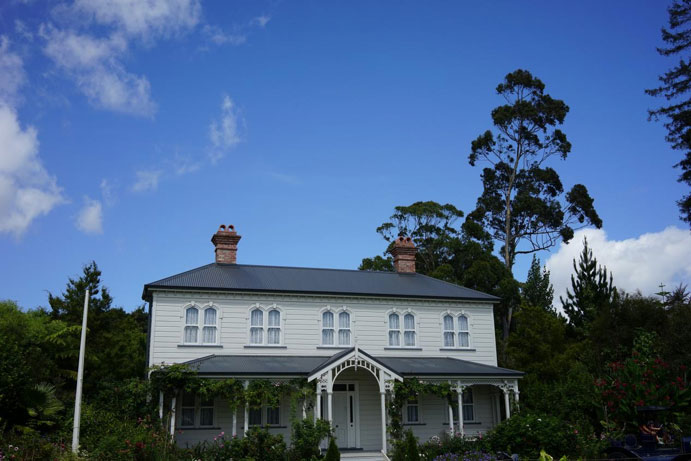How Much to Build a Double Storey House
Posted on |

At Meadan Homes, we understand that building a double-storey house is a significant investment, and it’s crucial to plan your budget wisely. This article explores the varying costs involved in constructing a double-storey house, factors influencing these costs, and essential information to help you budget effectively. We will reference authoritative Australian government resources, highlight critical stats, and answer some commonly asked questions.
Table of Contents
Cost Factors to Consider
When piecing together the cost puzzle for building a double-storey home, several elements can significantly influence the final figure.
One such key factor includes:
- Land Price: The cost of land can display significant fluctuations based on its location. Different areas come with their unique price tags, largely influenced by factors such as accessibility, amenities, and local market conditions.
- Construction Costs: This includes the cost of materials, labour, and contractor fees.
- Design Complexity: A more complex design means higher architectural costs.
- Fixtures and Finishes: High-end materials and fixtures will raise the cost.
- Council and Government Fees: These can include application fees, contributions, and charges from local council and government authorities.
Drawing on information from the Australian Bureau of Statistics, it was reported in 2022 that the typical expenditure for constructing a new residential dwelling hovered around $1,395 for every square metre. This data emphasises the significance of understanding the cost implications before embarking on the journey of home construction.
However, for a custom-designed double storey house, the cost could rise significantly.
How to Budget Effectively
To budget effectively, it’s essential to get a detailed quote from your builder. At Meadan Homes, we provide an exhaustive cost breakdown, so you understand exactly what you’re paying for.
You should also consider setting aside a contingency budget. Echoing the guidance from the Department of Industry, Science, Energy and Resources, it’s astute to earmark a buffer fund that covers roughly 10-20% of the entire project cost. This provision is your financial safeguard against unforeseen outlays or adjustments during the construction phase, giving you the peace of mind to handle any sudden twists and turns.
This financial cushion can protect you from unexpected expenses or changes in the construction process, ensuring you’re well-prepared to navigate any bumps along the way.
Key Considerations in Building a Double Storey House
Designing and building a double-storey house presents unique challenges that don’t typically exist in single-storey constructions. Therefore, it is vital to consider some critical factors when planning for your double-storey house to avoid unexpected costs and delays.
Understanding Regulations
Before you begin construction, it’s crucial to understand the local building regulations. These guidelines can impact your project in significant ways, such as dictating the type of materials you can use, the height restrictions for a two-storey building, and the required distance from your property line. It’s always recommended to check with your local council to ensure you’re aware of all the regulations.
The Need for Professionals
The design process of a double-storey house calls for an in-depth understanding and professional skills to guarantee that the resulting structure is not only safe and functional but also visually attractive. This blend of practicality and aesthetics is essential to create a home that truly serves and pleases its inhabitants.
Therefore, hiring professional architects, engineers, and builders can be a valuable investment. They will work together to ensure that your double-storey house is built to high standards, taking into account elements like load-bearing walls, staircase placements, and HVAC system designs.
Considering Long-term Costs
While factoring in the upfront construction costs is undeniably important, it’s equally vital to ponder over the ongoing expenses. This means considering the long-term costs associated with maintaining, operating, and potentially upgrading your home over its lifetime. This forward-thinking approach ensures you’re financially prepared not just for today, but for tomorrow as well.
A double-storey house can be more energy-efficient due to less roof area exposed to the sun, which can reduce your cooling costs. However, heating may be more of a challenge as heat rises to the upper floor. Therefore, proper insulation is crucial to keep your energy costs in check. If you’re interested in sustainable home building, check out our sustainable design page.
Understanding the Benefits and Challenges of a Double Storey House
Before you take the plunge into constructing a double-storey house, it’s essential to balance the scales, thoroughly understanding the potential advantages and drawbacks that come with this style of building. Undertaking this crucial step can be key to making a decision that perfectly syncs with your present lifestyle and caters to your long-term fulfilment. It’s about moulding a home that’s ready to meet your changing needs and desires, providing a cosy and pleasurable living area that endures over time. This process goes beyond merely constructing a house; it’s about shaping a sanctuary that genuinely reflects you. It’s your home, your personal haven, uniquely tailored to your way of living.
Benefits
- Expanded Living Space: If you’re squeezed for space, building upwards is a clever way to maximise your home’s footprint. A double-storey design allows you to effectively double your living area without needing to sacrifice valuable outdoor or garden space. This makes it a prime option for those working with limited land or smaller blocks.
- Spectacular Scenery: When you’re fortunate enough to live somewhere with captivating views, a double-storey house lets you take full advantage of the panorama. A double-storey home opens the door to the possibility of crafting warm, welcoming spaces such as bedrooms, living rooms, or even an enchanting balcony bathed in sunlight on the top floor. It’s like a blank canvas offering you the liberty to design the perfect environment that mirrors your lifestyle and personal tastes.
- Separation of Spaces: With two storeys, you can clearly separate living areas from sleeping areas.
Challenges
- Cost: Double-storey homes generally cost more due to additional requirements for structural support and more complex designs.
- Accessibility: Double-storey homes may not be suitable for the elderly or those with mobility issues.
- Heating and Cooling: Ensuring even heating and cooling between the floors can be more challenging and potentially costlier.
Deciding to build a double-storey home is a significant decision that can bring many rewards. Nonetheless, it’s crucial to equip yourself with a comprehensive understanding of the financial implications, potential obstacles, and the distinct advantages associated with building a double-storey house.
Conclusion
The cost to build a double-storey house varies greatly depending on several factors. At Meadan Homes, we strive to provide transparency and detailed cost breakdowns to help you plan your budget effectively. Ready to start your home building journey? Don’t hesitate, contact us today for a personalised quote. Browse our recent work!
Frequently Asked Questions
The timeframe can vary, but typically it takes around 7-10 months. This depends on factors like design complexity, weather, and any changes made during the construction process.
Building up is often cheaper as it reduces the amount of land used and the need for additional foundations.
On average, a double-storey home can cost 20-50% more than a single-storey home due to additional structural requirements and complexities.
The first step is to secure land, develop your design, and obtain planning permission from your local council.
Choosing a simple design, sourcing affordable yet quality materials, and closely monitoring the construction process can help save costs.


